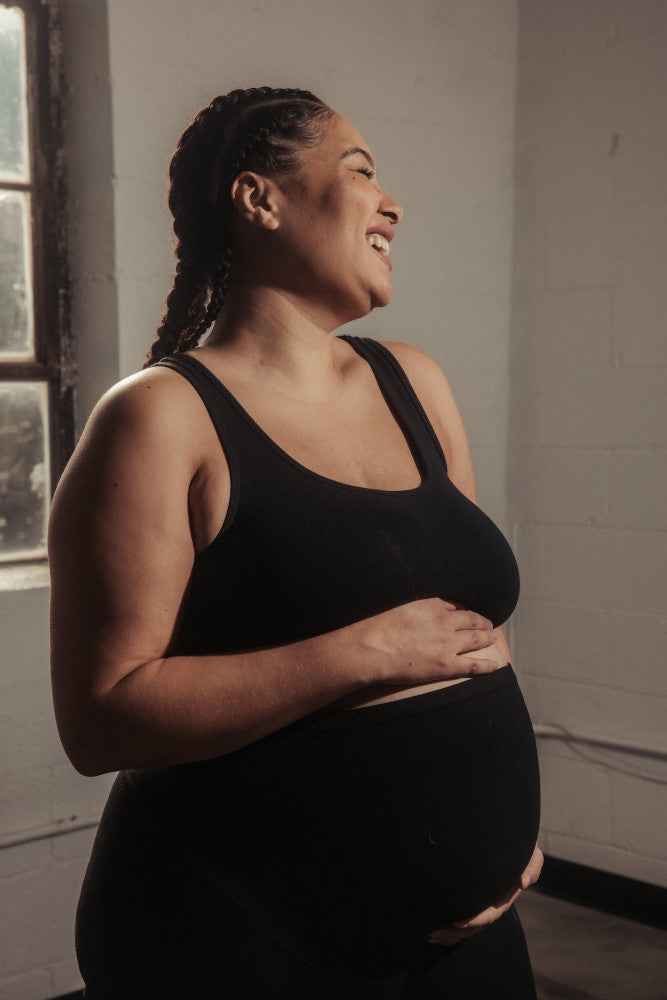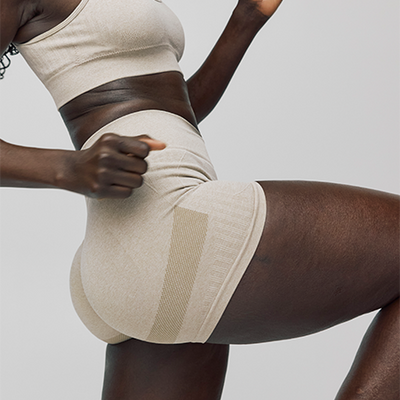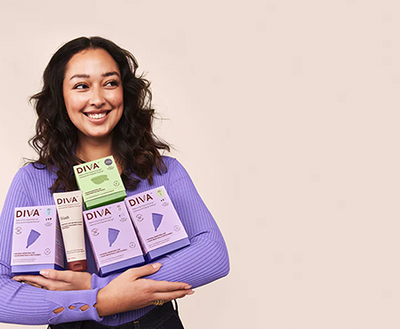

We often get asked, “Can I wear a menstrual cup after pregnancy?”. The short answer is yes, but due to the complexity of pregnancy, it is important to wait until your postnatal checkup (usually around six weeks postnatal) and doctor approval before using a menstrual cup after pregnancy.
Pregnancy comes with some uncomfortable symptoms, but one benefit is a break from your menstrual cycle (yay!). However, after birth, unless you are on some form of hormonal birth control, your period will eventually return (sigh).
For those choosing to breastfeed, your period may not return for slightly longer because prolactin, the hormone responsible for breast milk, can have a suppressive effect on ovulation. Remember, once your period does return, you have already ovulated, which means you can get pregnant before you’ve had your first period as ovulation occurs before menstruation. You’re welcome!
We’ve put together a quick guide for everything you need to know about post pregnancy periods and wearing a menstrual cup after pregnancy.
Postpartum Bleeding – What to Expect
As if you haven’t gone through enough, after pregnancy you will experience postnatal bleeding which can last anywhere from four to six weeks. Think of it as a long, annoying super period. Your uterus is contracting, and you will lose tissue, clots and lots and lots of blood. It’s not ideal but it’s necessary for a full recovery post-baby.
After birth, your uterus will shrink back to its normal size, the cervix will close, and your vaginal muscles will need some TLC before anything (and we mean anything) dares to go near.
You know just everyday shero stuff.
While you may be tempted, do not use a menstrual cup, or any internal menstrual care product for postnatal bleeding (also called lochia). The body needs to time to recover and there is increased risk of infection post baby.
Physiological Changes That May Affect Using a Menstrual Cup After Pregnancy
Yes, it’s true, vaginal labor, episiotomies, forceps and after birth stitching change the feel (and look) of your vagina. Pregnancy also changes the elasticity of the vaginal canal. We know this all sounds like a lot, and for some, it really can be a hard road to recovery. Don’t be afraid to ask for help from your doctor or a trained pelvic health physiotherapist.
Whether you have delivered vaginally or by C-section, your pelvic floor needs time to recover from nine months of strain. Remember the vaginal canal is a muscular tube that can hold your menstrual cup in place. Too tight or too loose of a vaginal muscle can cause discomfort, movement of the cup or leaking. None of these are ideal. Additionally, your cervix may have dropped slightly or titled, both of which may mean inserting the cup or angling the cup differently for maximum cup comfort.
Due to these physiological changes, your menstrual cup my fall out or not even go in on your first try post-baby. This can be very frustrating! On top of caring for a very loveable (yet demanding baby), your trusted period care option isn’t working the same.
Rest assured; this is normal
Your body will adjust, but it can take several months or even up to a year to find success with a menstrual cup after pregnancy. Pelvic health physiotherapy can be an excellent resource.
It is important to not try pelvic floor exercises without first receiving advice from a trained physiotherapist. Getting a proper assessment will tell you if you need to work on tightening or loosening the vaginal muscles and pelvis. Pelvic physiotherapists are super helpful for menstrual cup success post-baby.
Flow Changes After Pregnancy
Once your period returns, you can expect increased menstrual flow and cramping with your first few postpartum periods. Your menstrual cycle is getting back into a rhythm of monthly periods and it needs to find its new groove, and so do your hormones! Be kind to yourself; creating life is a huge deal.
If you are cleared to use a menstrual cup, using one can help you track changes to your menstrual flow. Chat with your doctor about any changes that concern you such as skipping periods, large clots (bigger than a quarter) or spotting throughout your cycle. If you find you are changing product every hour, that could be a sign of infection or fibroids. Most changes do resolve themselves within a few months time.
Menstrual Cup Sizing Change After Pregnancy
Just because you have had a baby doesn’t mean you need to switch to a larger menstrual cup size (Model 2 DivaCup). While some moms may need to make the switch to a bigger menstrual cup size, many find over time, that the best postpartum menstrual cup size is the one they used prior to pregnancy.
For those who have had multiple births, switching to a Model 2 may be required as pregnancy can strain the pelvic floor muscles. If you find that your cup doesn’t fit quite right, our Consumer Experience Team is always available to offer their support to ensure you are using the best menstrual cup size for after pregnancy. We recommend reaching out to them at support@divacup.com before switching to a different model size.
Hygiene 101
Before using your menstrual cup post-baby, give it a thorough clean by boiling it. If your cup was not stored in a dry, cool place in the cotton drawstring pouch, you may want to replace it with a new one to ensure it’s in the best shape possible.
Disclaimer: The content of this blog is based on research and information available at the time of writing. As new research is made available, we will work to update and adjust our content as appropriate. If you have general questions, or concerns related to your own individual circumstances, please contact our Consumer Support team, or speak to a healthcare practitioner for more specific questions about your individual circumstances.























